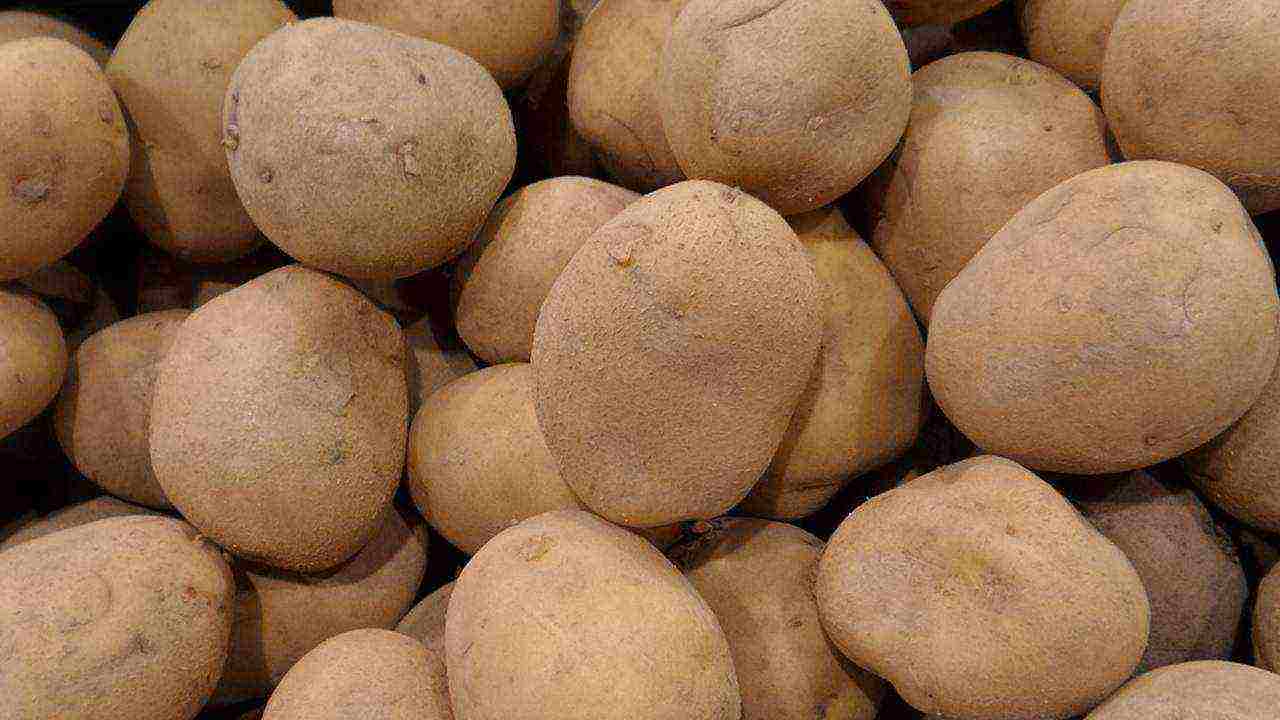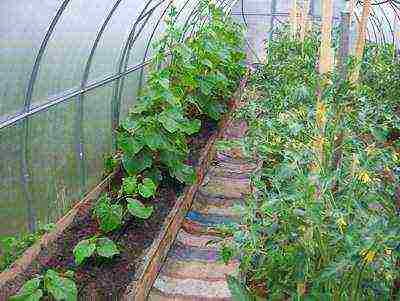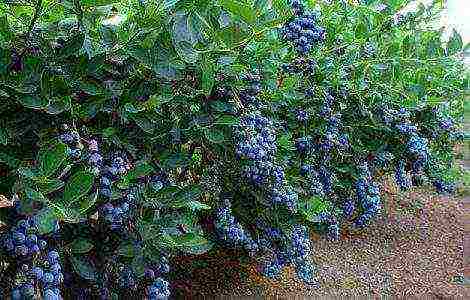Content
- 1 Potato varieties for the Vologda, Kaliningrad, Kostroma, Leningrad, Novgorod, Pskov, Tver and Yaroslavl regions
- 2 Features of growing potatoes in the North-West region of Russia
- 3 The best varieties for the Northwest region
- 4 Potatoes for growing in the Leningrad region
- 5 New potato varieties for the Northwest region
We offer a list of zoned potato varieties for the North-West region of Russia. If you are growing potatoes in the Vologda, Kostroma, Leningrad, Pskov and neighboring regions - these varieties will help you to harvest the best harvest.
Some varieties were included in the register for the first time: Damaris, Manifesto and Charoite, read more about them below in the article.
Northwest region:
- Vologodskaya Oblast
- Kaliningrad region
- Kostroma region
- Leningrad region
- Novgorod region
- Pskov region
- Tver region
- Yaroslavskaya oblast
Potato varieties for the Vologda, Kaliningrad, Kostroma, Leningrad, Novgorod, Pskov, Tver and Yaroslavl regions
- LORH
- CHILDREN'S
- RAMENSKY
- RESERVE
- SUTANOK KIEVSKY
- LUGOVSKY
- BRONNITSKY
- NIDA
- LASUNAK
- SANTE
- CHAROIT
- MANIFESTO
- DAMARIS
- Bettina
- EL MUNDO
- BAFANA
- BIOGOLD
- VEKTAR BELARUSIAN
- ZORACHKA
- COLOMBA
- LUCINDA
- ZHUKOVSKY EARLY
- LUCK
- GLORIA
- MUSIC
- PUSHKINETS
- CHRISTMAS
- ASPIA
- FRESCO
- YANKA
- RANGE
- ULADAR
- LOMONOSOVSKY
- GIVEN
- SAGITTA
- OCEANIA
- SILVANA
- MOZART
- PURPLE HAZE
- Dolphin
- Estrella
- REAL
- CIFRA
- NIKULINSKY
- IMPALA
- BLAKIT
- LILEYA BELARUSIAN
- Dubrava
- BREEZE
- MADAM
- ELIZABETH
- PETERSBURG
- ROSARA
- LATON
- ALOVA
- ROMANZE
- LEAGUE
- SERPANOK
- OBEY
- THE WIZARD
- Karatop
- SANTANA
- RADONEZH
- AURORA
- Ladoga
- RYABINUSHKA
- STREAM
- INSPIRATION
- FELOX
- TIMO KHANKKIYAN
- ALVARA
- ZHURAVINKA
- GALA
- KREPYSH
- RED SCARLETT
- BULLFINCH
- VICTORIA
- NAIAD
- PETER'S RIDDLE
- GULL
- VISA
- SAP
- SCARB
- KRINITSA
- SPARTA
- MEMORY OSIPOVA
- KHOLMOGORSKY

New potato varieties for the Northwest region
Variety DAMARIS
Medium-early ripening variety, table purpose.
The bush is of medium height, semi-spreading. The leaves are large, light green.
The average yield of the variety is 181-371 c / ha.
The tuber is oval, the eyes are small. The rind is light beige. The pulp of the tuber is light yellow. The average tuber weight is 94-128 g. Starch - 11.1-14.2%.
The taste is good. Marketability 88-97%. Keeping quality is good, 96%.
Resistant to pathogens of such potato diseases:
- potato cancer
- golden cyst nematode
- wrinkled mosaic
- striped mosaic
To late blight - average resistance.
Potato variety MANIFEST
Variety of medium-early ripening, table purpose.
The bush is medium, semi-erect. The average yield of the variety is 165-408 c / ha.
The tuber has an elongated oval shape, the eyes are small. The skin of the tuber is red. The pulp is light yellow. Tuber weight 104-132 g. Starch - 13.0-15.4%.
The taste is excellent. Marketability 79-97%. Keeping quality 94%.
Resistant to pathogens of such potato diseases:
- potato cancer
- golden cyst nematode
- wrinkled mosaic
- striped mosaic
- rolling leaves
To late blight - average resistance.
Variety CHAROIT
A variety of early ripening, table purpose.
Bushes of medium height, semi-erect. The leaves are large, light green. The edges of the leaves are strongly wavy.
The yield of the variety is 228-321 c / ha.
The tuber is oblong-oval in shape, the eyes are small. The peel is yellow. The pulp of the tuber is light yellow. Tuber weight 100-143 g. Starch - 14.3-17.0%. The taste is excellent. Marketability 82-98%. Keeping quality 96%.
Resistant to pathogens of such potato diseases:
- potato cancer
The variety showed average resistance to such diseases:
- late blight
- striped mosaic
The cultivar is susceptible to golden potato cyst nematode.
| Northwest region (for Vologda, Kaliningrad, Kostroma, Leningrad, Novgorod, Pskov, Tver and Yaroslavl regions) | Northern region (Arkhangelsk, Murmansk, Komi, Karelia) |
| North Caucasian region (for Krasnodar Territory, Rostov Region, Stavropol Territory, Adygea, Chechnya, Ossetia, Ingushetia, Dagestan, Circassia and Kabardino-Balkaria) | Lower Volga region (Astrakhan, Volgograd, Saratov, Kalmykia) |
| Middle Volga region (for Penza, Samara, Ulyanovsk regions, Mordovia and Tatarstan) | West Siberian region (for Tyumen, Tomsk, Novosibirsk, Omsk, Kemerovo regions and Altai) |
| Ural region (potato varieties for Orenburg, Chelyabinsk, Kurgan regions and Bashkortostan) | Far East (for Amur, Magadan, Sakhalin regions, Kamchatka, Khabarovsk Territory and Primorsky) |
| Central Black Earth Region (for Belgorod, Voronezh, Kursk, Lipetsk, Oryol and Tambov regions) | East Siberian region (for Irkutsk Region, Krasnoyarsk Territory, Transbaikalia, Buryatia, Yakutia, Khakassia) |
| central region (for Moscow region, Moscow, Bryansk, Vladimir, Ivanovo, Kaluga, Ryazan, Smolensk and Tula regions) | Volgo-Vyatka region (for Kirov, Nizhny Novgorod, Sverdlovsk regions, Perm, the Republic of Mari El, Udmurtia and Chuvashia) |
Good luck to you!
(Visited 3,437 times, 1 visits today)
loading ...
Answer: from Anna Matveeva
Promising varieties of potatoes in the Vologda region
Nowadays, the attractive appearance of tubers, their beautiful aligned shape are highly valued, which largely determines consumer demand in the market and significantly affects the price. They began to pay attention to such features as peel color, pulp color, taste characteristics, starchiness. First of all, I recommend using varieties that are resistant to the golden potato cyst nematode.
According to the results of variety trials in recent years, potato varieties have been zoned and recommended for the Vologda region: Latona, Nevsky, Elizaveta, Charodey, Inspiration, Nayada, Lugovskoy, Petersburg, Skarb, Blakit, Liga, Lileya Belorusskaya, Real.
Since 2012, 2013, 2014 potato varieties have been proposed for zoning for the Vologda region: Lomonosovsky, Uladar, Danae, Sylvanas, Estrella, Lilac fog, Mozart, Sifra, Vektar Belorussky, Gloria, Colomba.
The varieties are of Belarusian, Russian, Dutch, German selection. About the characteristics and more detailed consultation, we send the answer by e-mail.
Potatoes are a plant that requires warmth and light. How to grow it in conditions of frequent changeable weather and excessive abundance of natural precipitation.
Features of growing potatoes in the North-West region of Russia
The climate in the Northwest region of Russia is influenced by Arctic, Atlantic and continental air masses. Winter here lasts from November to February. March is the sunniest of all months of the year, while April is foggy and cloudy. The hot period of summer is no more than two weeks, all other days are cloudy and precipitation. Autumn begins in mid-August. Not every potato variety is suitable for growing in this region.
There are many factors to consider when choosing a potato variety.
Landing time
Potatoes are planted, as a rule, in early May, when leaves bloom on birches. The specific date is determined using the lunar calendar. An important rule is to warm up the soil at a depth of 10 cm to no less than 8-12 degrees Celsius.
Potatoes are planted only in well-heated soil.
Site selection
A plot for potatoes is chosen sunny and protected from free winds. It cannot be planted in the same place every year. The best predecessors are cabbage, cucumbers, and legumes. But best of all, in the fall, in the place where you plan to grow potatoes, plant rye or mustard. Rye planted in winter will enrich the soil with nitrogen, potassium, and organic matter. It is a wonderful green manure that makes the ground loose and breathable.
Rye enriches the soil with nutrients useful for potatoes
Podzolic and peat bog soils, which require large amounts of fertilizers, prevail in the North-West region of the country. They need to be applied in autumn and spring, before plowing. The most suitable are poultry droppings and manure, in the fall you can apply fresh, but in the spring - only in a rotted state.
The soil for planting potatoes must be fertilized
In order for the soil to warm up faster in spring, in the fall it needs to be loosened or high ridges formed. Also, to speed up the process, you can cover it with a film after the snow melts.
Rules for planting potatoes in the northwest
In order to get an early harvest, only germinated tubers need to be planted. To do this, about a month before sowing, they are taken out of storage, the healthiest ones, weighing 60–80 grams, are selected, and germinated: laid out on a flat surface and kept in a warm, well-lit place, periodically turning over. You can put the tubers in boxes with wet peat or sawdust, sprinkle them, not forgetting to sprinkle with warm water from time to time. You need to be very careful with the sprouts, you cannot damage them, otherwise there will be no seedlings.
For planting potatoes, you need to use only sprouted tubers.
Potatoes are planted in three classic ways:
- Smooth - digging holes on a flat surface.
- Ridge - laying potatoes into formed ridges.
- Trench - planting tubers in trenches.
For each type of site, the method must be selected individually. For example, in waterlogged soil, growing in ridges is well suited. The soil in them dries out faster, and the roots of plants are better enriched with oxygen, which has a very good effect on the speed and quality of the fruits formed. Optimal planting depth for medium-sized potatoes — 8-9 cm, in the ridges — 10-12 cm. The basic rule for any method of planting potatoes is that the arrangement of the rows must be observed strictly from north to south.
For waterlogged soils, growing potatoes in ridges is well suited
Features of growing late varieties
Summer in the Northwest region is rather short, so only early and middle type of potatoes can be grown in the open field. To fully form their fruits late varieties, you need to use hotbeds or greenhouses.
Growing potatoes in a greenhouse
In the greenhouse, the optimal air temperature and humidity are created for the plants, they ripen earlier than in unprotected soil, and there are no diseases and various pests.
The greenhouse is the perfect place for potatoes
Potatoes are planted in a greenhouse earlier than in open ground, because the soil there warms up faster. In the Northwest region, this period usually begins in April. The cultivation process is the same: the soil is dug up and fertilized, a hole is dug, a sprouted tuber is put, sprinkled with earth, the plants are loosened, weeded, spud, watered.
Potatoes are planted in the greenhouse earlier than in open ground
To shorten the growing season of potatoes, which is important when growing late varieties, the seedling method is used. To do this, 3-4 weeks before planting, sprouted tubers are planted in peat, plastic pots, or cut bottles, sprinkled with soil or sand, watered and loosened in a timely manner. Plants obtained in this way take root better in the soil.
Seedling method of growing potatoes shortens the growing season
Growing potatoes in greenhouses
If the greenhouse is occupied for planting more thermophilic crops, then potatoes in the open field can be covered with foil or agrofibre, and it is better to make a greenhouse. To do this, you need to install arcs on a garden bed with potatoes and cover them with a film, securing the edges well. This shelter will help protect plants from temperature extremes. Periodically, in good sunny weather, the greenhouse will need to be opened to weather the excess accumulated moisture, water, fertilize the plants, loosen the soil and close it again. In greenhouses, potatoes ripen at least 2 weeks earlier, and the quality of the crop is much higher than that grown in the open field.
Greenhouse allows you to get an earlier harvest of potatoes
Care
Gardeners of the North-West region are constantly experimenting. They grow potatoes in barrels, buckets, bags, wooden boxes, under straw and hay, in the Dutch, Chinese way. Someone eventually switches to these alternative planting methods completely, while someone grows, as they say, in the old fashioned way. But whichever method you choose, the potatoes definitely need full care, otherwise there will be no high yields. It includes weeding, hilling, loosening the soil, watering and fertilizing, protecting against diseases and pests.
Most often, potatoes are watered with natural precipitation, but two weeks after germination, as well as during the beginning and end of flowering, plants need additional watering with top dressing. A good fertilizer is diluted mullein or nettle infusion. Thus, the potatoes are watered and fertilized at least three times during the entire growing period. This number increases during dry seasons.
Over the entire period of growth, potatoes must be watered at least three times.
Hilling plants, you save them from cold snaps, remove weeds, saturate the roots with oxygen, and stimulate the growth of green mass. The first time hilling is carried out at the emergence of seedlings, and then after watering and rains. Flowering signals the beginning of the formation of tubers, therefore, during this period, air access is especially necessary.
Hilling oxygenates the plant roots
Plants in the North-West region are most often protected from late blight, the development and widespread distribution of which is provoked by increased moisture in the air and soil. Ash is a good helper in this, the plants are watered with its solution, and the tops are showered in a dry form.
Late blight is a consequence of increased soil and air humidity
Of the pests in the North-West region, shrews are especially common, which are especially gluttonous. The benefit of these animals is that they eat a huge number of insects. Harm - the destruction of root crops.
The shrew is one of the most common potato pests in the Northwest region.
Potato pests of the Northwest region table
The best varieties for the Northwest region
Potato planting material directly affects the harvest. The best option is elite varieties.They practically do not get sick, and pests bypass them, in addition, their quality and taste are higher than other varieties. Among other things, they do not degenerate longer, but they are an order of magnitude higher than other varieties, and not every gardener has the opportunity to purchase them.
Elite varieties are the best option for growing potatoes
It is better to plant several types of potatoes at once, with different duration of the growing season, because it is not known what kind of weather this summer will please and what variety can grow and give a harvest.
Potato types
Potatoes are divided into three types:
- Early - 50-60 days from the moment of germination - ripens quickly, is very poorly stored.
- Mid-season - 70–90 days - has a long shelf life, has a good taste.
- Late ripening - more than 100 days - a lot of starch, good taste and shelf life.
Early varieties
Early potatoes ripen early, before late blight begins to spread. This is its undeniable advantage. The disadvantage is that it is very poorly stored, so it is most often grown in small quantities, and having dug it out, they try to cook it right away.
For the North-West region, many varieties of potatoes have been zoned. Basically, gardeners are guided when choosing their yield.
Best of early table
The best of the early varieties of potatoes photos
Mid-season potato varieties
Mid-season potatoes are the preferred type for the Northwest region, with an optimal growing season, good taste and shelf life.
The best mid-season varieties table
The best mid-season potato varieties photo
Late varieties
Due to the long growing season in the North-West region of the country, late varieties of potatoes are not grown outdoors. But because of their good taste and ability to store for a long time, some gardeners choose them and grow them in greenhouses and greenhouses.
The best among the late varieties table
The best of the late varieties of potatoes photos
Potatoes for growing in the Leningrad region
In the area under consideration, gardeners are also preferred to early potato varieties due to the short and humid summer.
Potato breeding common in the Leningrad region - table
The main requirements of gardeners for potatoes are the tolerance of adverse weather conditions, a short growing season, resistance to late blight and high yield.
Common varieties of potatoes in the Leningrad region - table
Photo gallery of common varieties
New potato varieties for the Northwest region
Despite the abundance of varieties, breeders are constantly breeding new potatoes, with good resistance to diseases and pests, beautiful and tasty fruits. For the Northwest region, such ones as Charoite, Manifesto and Damaris are suitable.
Manifesto is a mid-early variety. Tubers are oval, elongated, red, weight 100–130 grams, amber pulp, excellent taste. The yield is high (160-460 kg per one hundred square meters), depends on fertilizers, keeping quality is good. Resistant to golden nematode and leaf roll virus. Medium susceptible to late blight.
Manifesto - a variety without flaws
Charoite is an early potato variety; you can start digging tubers after 60 days from the moment of germination. For the rapid formation of fruits, it is popularly called the Rapid Ripening of Peter. Tubers are elongated, oval, yellow, weighing 100-140 grams. The taste is excellent, the yield is high (230–320 kg per one hundred square meters). Stores well. Resistant to cancer. Susceptibility to late blight is average. It is affected by the golden nematode.
Charoite is the best variety for the North-West region of Russia
Damaris is a medium early variety, with beige oval tubers of good taste, weighing 90–130 grams. A productive variety (180-450 kg per one hundred square meters), well stored. Resistant to diseases such as cancer, scab, mosaic, black leg. Medium susceptible to late blight. Not affected by golden nematode.
Damaris
Take a note of the variety you like and plant it on the site. Experiment additionally: look for and plant new varieties, apply new growing methods. Search directly for yourself, the best potatoes for your taste.


